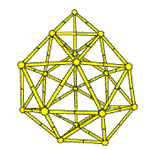Department of Chemistry
Date of this Version
July 1998
Abstract
Carbon nanotubes combine a range of properties that make them well suited for use as probe tips in applications such as atomic force microscopy (AFM)1, 2, 3. Their high aspect ratio, for example, opens up the possibility of probing the deep crevices4 that occur in microelectronic circuits, and the small effective radius of nanotube tips significantly improves the lateral resolution beyond what can be achieved using commercial silicon tips5. Another characteristic feature of nanotubes is their ability to buckle elastically4, 6, which makes them very robust while limiting the maximum force that is applied to delicate organic and biological samples. Earlier investigations into the performance of nanotubes as scanning probe microscopy tips have focused on topographical imaging, but a potentially more significant issue is the question of whether nanotubes can be modified to create probes that can sense and manipulate matter at the molecular level7. Here we demonstrate that nanotube tips with the capability of chemical and biological discrimination can be created with acidic functionality and by coupling basic or hydrophobic functionalities or biomolecular probes to the carboxyl groups that are present at the open tip ends. We have used these modified nanotubes as AFM tips to titrate the acid and base groups, to image patterned samples based on molecular interactions, and to measure the binding force between single protein–ligand pairs. As carboxyl groups are readily derivatized by a variety of reactions8, the preparation of a wide range of functionalized nanotube tips should be possible, thus creating molecular probes with potential applications in many areas of chemistry and biology.



Comments
Published in Nature 394 (July 2, 1998), pp. 52–55; doi 10.1038/27873. Copyright © 1998 Macmillan Publishers Ltd. Used by permission.